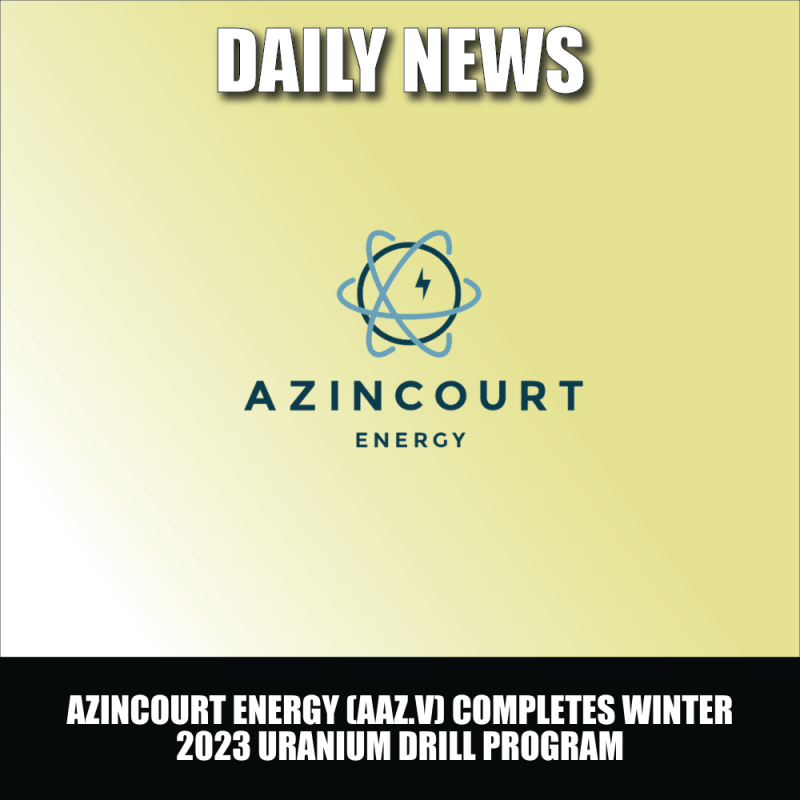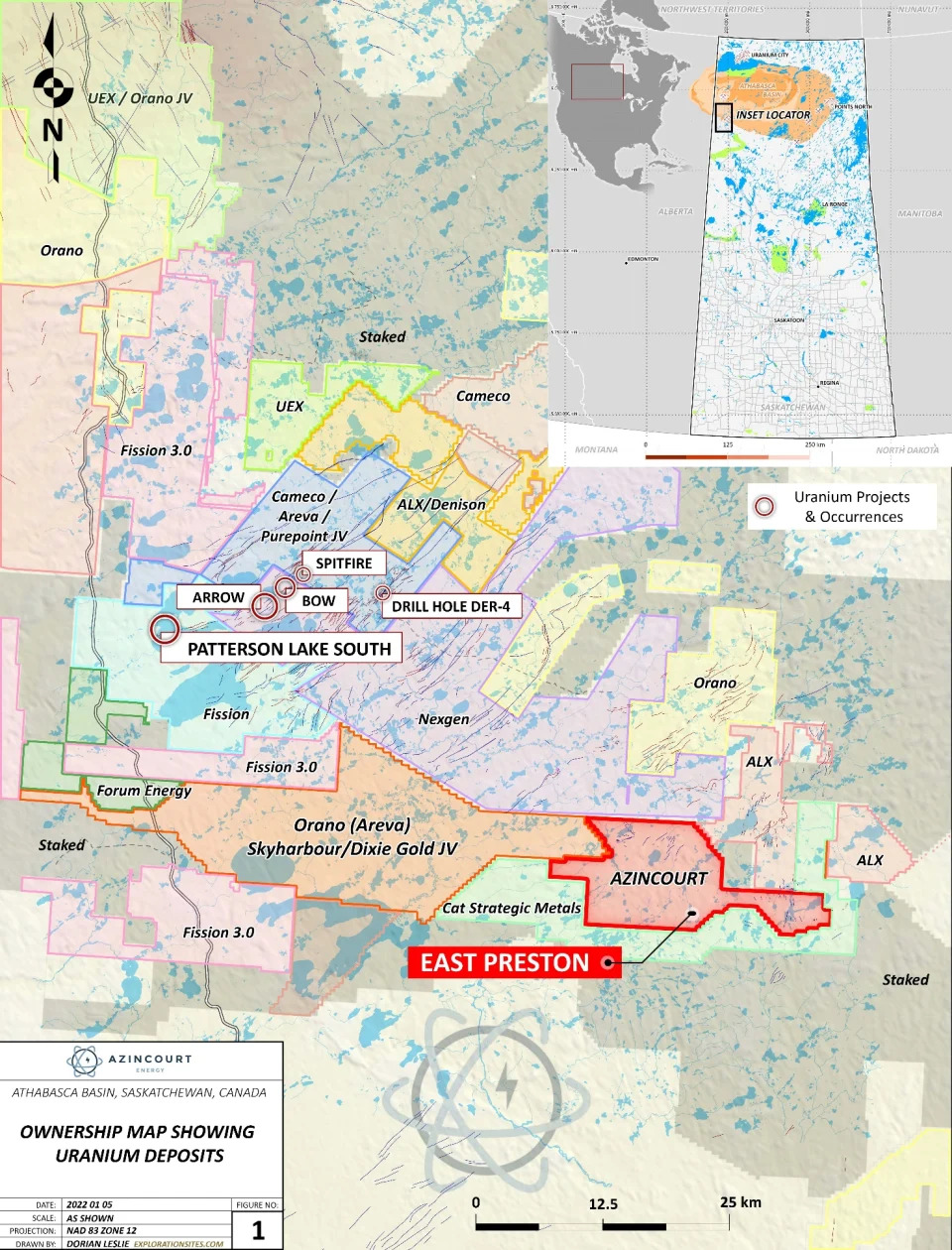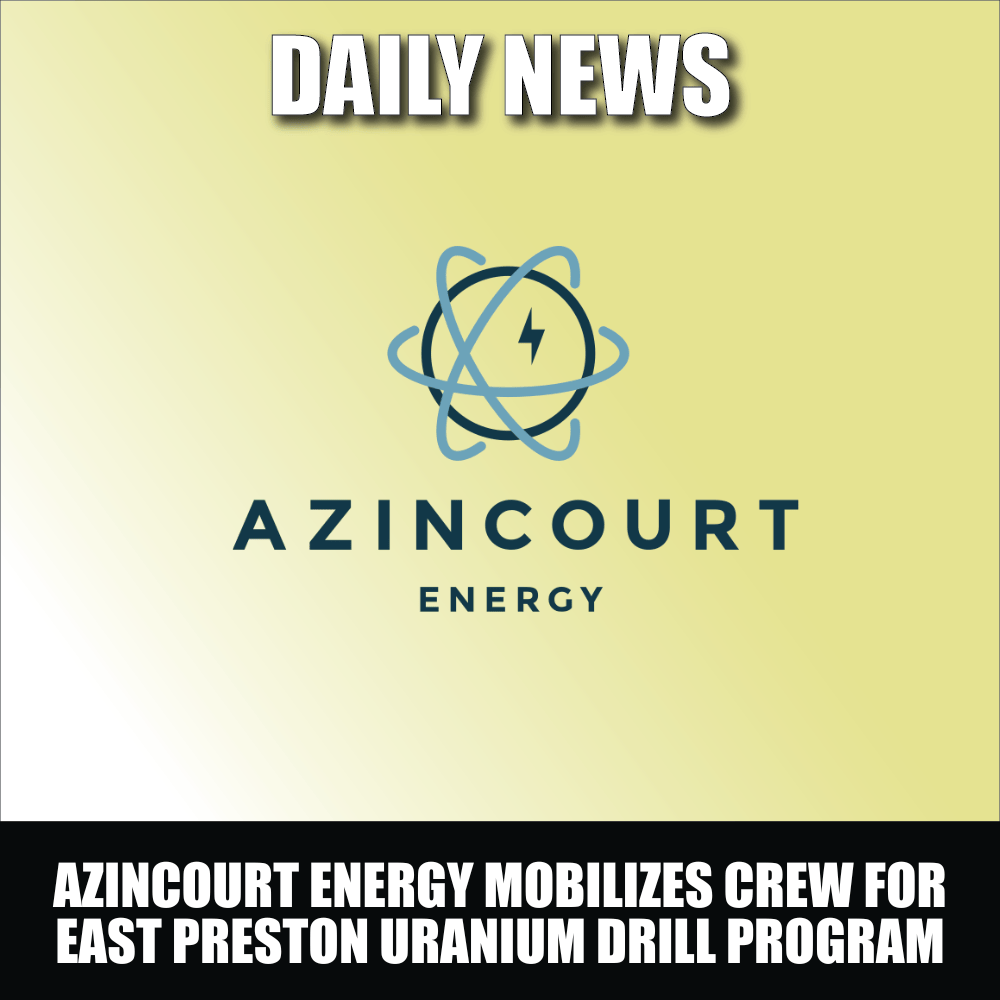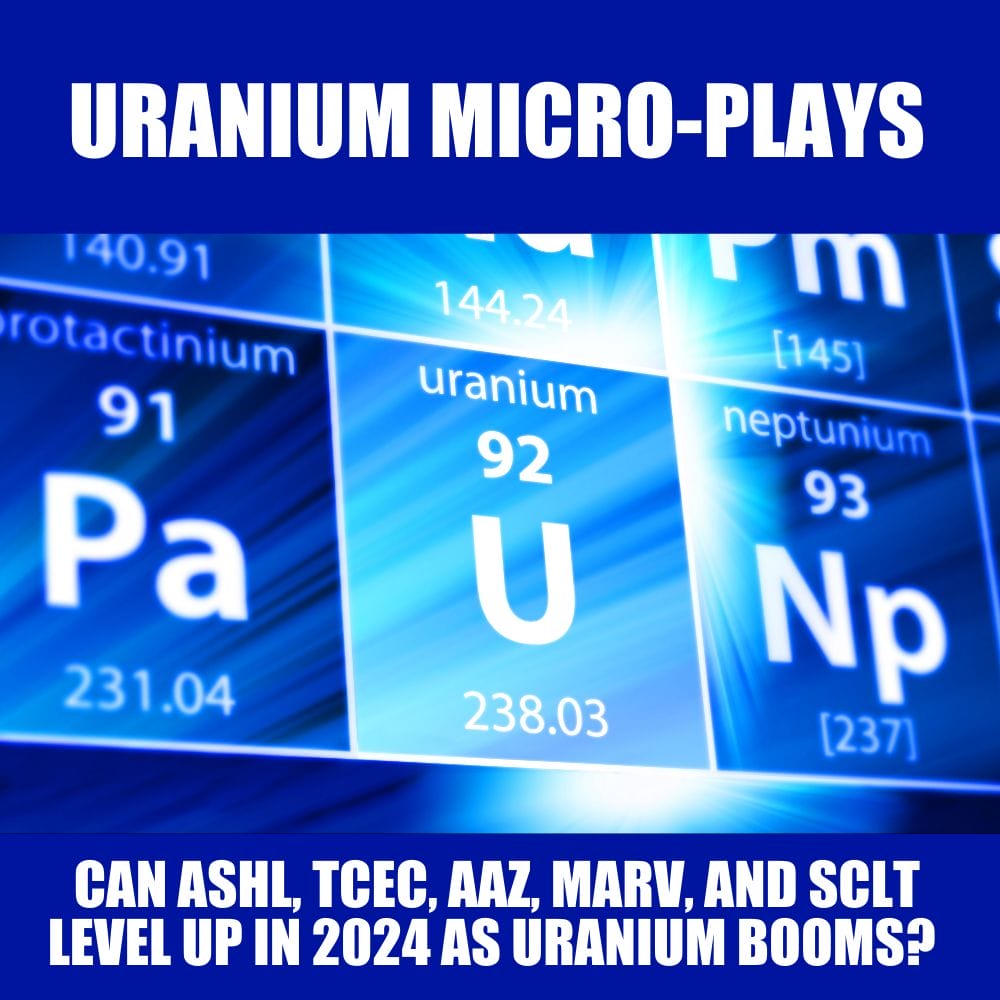Azincourt Energy is a Canadian-based resource exploration and development company focused on the alternative fuels/alternative energy sector. Their core projects are in the clean energy space, with uranium exploration projects in the prolific Athabasca Basin, Saskatchewan, Canada, and lithium/uranium projects on the Picotani Plateau, Peru.
Currently Azincourt is developing the East Preston uranium project, located in the prolific Athabasca Basin, with partners Skyharbour Resources (TSX.V: SYH) and Clean Commodities Corp (TSX.V: CLE) , and the Escalera Group lithium/uranium project in Peru.
Today, Azincourt announced it has completed the 2023 exploration program at the East Preston Uranium Project.
Drilling commenced on February 2nd 2023, and completed March 8th 2023. A total of 3,066 metres were completed in 13 drill holes. Two drill rigs were able to complete 12 drill holes and one abandoned due to drilling difficulties. Drilling was focused on the G, K, H, and Q zones with prior progress reported in a news release dated February 28th, 2023.
The priority of the drill program was to continue to evaluate the alteration zones and elevated uranium identified in the winter of 2022 with a focus on the G, K, H and Q Zones.
Drilling on the northeast trending G-Zone consisted of three holes to follow up 2022 results. Extensive hydrothermal alteration and evidence of east-west cross-cutting structures have been intersected along the southern portion of the zone. The alteration zone is highlighted with intervals of hydrothermal hematite alteration and extensive evidence for a steep east-west fault cross-cutting the main northeast trending structure and graphitic lithologies. Elevated radioactivity was intersected in EP0045 and EP0047.
On the north end of the K-Zone three holes were completed. Drilling has intersected extensive structure and hydrothermal alteration, increasing the length of this alteration zone by 300 meters to 1500 meters long. Extensive clay alteration within the structural zone is an indication of upgraded prospectivity and vectoring towards potential mineralization.
Five holes have been completed on the north section of the H Zone. Drilling intersected an intense graphitic fault zone with hydrothermal alteration.
One drill hole was completed on the Q-Zone. Weak structures with hematite alteration were identified with a notable lack of a graphitic package. Additional drilling will be warranted to confirm the source of the conductor; however, this area will be a lower priority moving forward.
The company considers the drilling results to date to be significant, as major uranium discoveries in the Athabasca Basin such as McArthur River, Key Lake, and Millennium were primarily the result of drill testing of strong alteration zones related to conductor features. Identifying and upgrading the strong alteration zones is a significant step forward in identifying the key areas along the conductor trends where more attention is required.
“The alteration we are seeing in the K and H Zones is very encouraging” said VP, Exploration, Trevor Perkins. “This and previous programs have shown that we have a significant alteration system present on the property. Finding the extents of this system and identifying where within that system the alteration fluids are focusing remains a top priority. The identification of dravite and illite clays emphasizes that we are on the right track and getting very close,” continued Mr. Perkins.
“We’re very pleased with the results of this year’s program so far,” said president and CEO, Alex Klenman. “Intersecting dravite and other clays, after the discovery of hematite alteration last winter, matches the very exploration model we’re following. This is what we wanted to see and needed to see. This is a very positive development and we’re excited to see the lab results.
A total of 687 samples were collected throughout the program and sent to the Geoanalytical Laboratory at the Saskatchewan Research Council in Saskatoon, Saskatchewan for analysis. Results are expected to start arriving in May.

The stock has recently broken down and retested previous all time lows tested in 2020 hitting $0.04. In doing so, we have broken below this support which has been holding since 2022 at $0.045. We are seeing a nice recovery on today’s news. Bulls would want to see a strong close back above this support level to confirm a false breakdown. The fundamental catalyst which could see momentum carry through would be drill results expected in May 2023.

It should also be noted that uranium price has slipped in the month of March. We called this drop for our readers and even provided the support target of $18. There is a potential for a uranium reversal here. A double bottom pattern looks to be forming but the trigger would be a daily close above $19.60. If this happens, the entire uranium space would benefit from this reversal.








